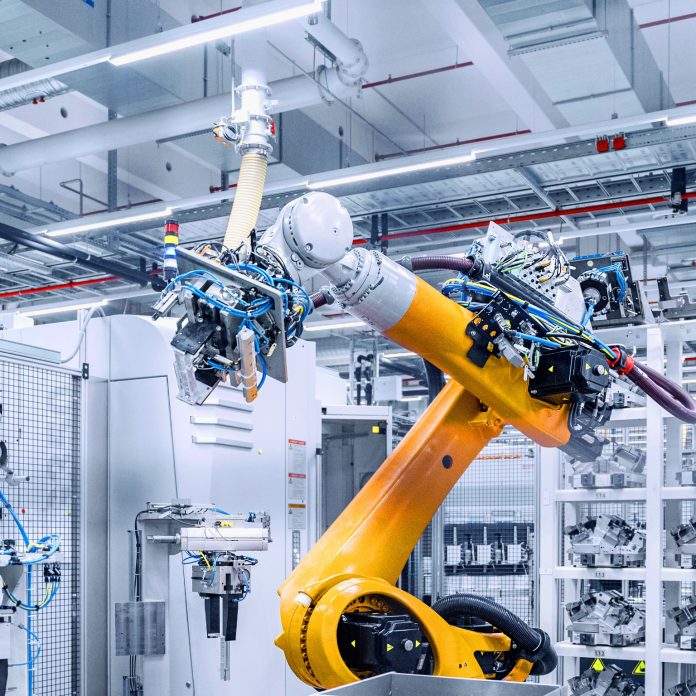The industry overview—and opportunities for 2025 and beyond
Our research shows that M&A activity level in advanced industries in 2024 was similar to that in 2023 but only half the M&A activity levels in 2020 and 2021 (measured by total deal value). For the purposes of our analysis, the advanced industries sector includes companies in automotive, aerospace and defense, industrials and electronics, and semiconductors. In 2024, there were 812 deals announced involving these companies and $196 billion invested overall. Compared with 2023, the total number of deals increased by about 5 percent, while the total deal value decreased by about 10 percent, driven by an increase in the number of smaller deals (those with a value of less than $1 billion).
Most of 2024’s transactions occurred in the second half of the year, suggesting deal momentum moving into 2025. In fact, a number of trends point to an uptick in M&A activity within advanced industries and among subsectors, including reduced interest rates and the emergence of new technologies, software, and ecosystems. Companies in this sector will likely continue to pursue carve-outs and joint ventures as alternatives to acquisitions to better manage corporate portfolios and risks.
Additionally, a substantial amount of capital is available among major private equity (PE) players, which may prompt further M&A activity in this sector across regions. About $940 billion in dry powder was available in 2024, and 22 percent of advanced industries transactions were associated with PEs. About 35 percent of global PE buyout volume was deployed in advanced industries in 2024, compared with under 20 percent less than a decade ago. For these and other reasons, PE activity in advanced industries is likely to continue in 2025.

Subsector activity
Trends varied across the four subsectors we analyzed. Rapid evolution in the automotive space is presenting significant opportunities for suppliers that have robust M&A programs. M&A is becoming an attractive option for aerospace-and-defense players seeking to address geopolitical shifts, emerging technologies, and changing service models. M&A is a compelling option for industrials and electronics companies, as well, in different verticals. And a critical driver of M&A in semiconductors is accelerating growth in AI and other technologies.
Automotive and assembly
Economic uncertainty was a factor in the substantial decrease in automotive deal volume in 2023 and 2024, but the major players in this subsector have continued to explore partnerships and acquisitions focused on electric-vehicle infrastructure, connected-vehicle technologies, and autonomous-driving capabilities.
Suppliers already have the lowest profitability among all the players in the automotive value chain. On top of that, they face cost pressures from tier-two suppliers and OEMs and are experiencing disruption from shifting value pools for certain components, such as gas tanks and batteries. These dynamics and others will continue to make M&A an attractive proposition for suppliers in 2025.
As the prospects for growth in internal-combustion-engine technology continue to narrow, suppliers will be on the lookout for ways to increase efficiency, including through moves to reshape their portfolios. Additionally, given the previously mentioned cost pressures from OEMs, suppliers will need to pursue transactions that allow them to scale and limit margin erosion as they develop and adapt resilient growth platforms to support eventual zero-emission vehicles. And finally, to grow, suppliers will need to continue to differentiate themselves through vehicle software and electronics as traction increases for electrical and electronic solutions like advanced driver assistance systems.
M&A activity among OEMs has been muted recently because of market uncertainties; the few sizable deals that did occur were connected to partnerships and joint ventures—for instance, the joint venture between Rivian and Volkswagen, with an expected total deal size of $5 billion. Activity is likely to remain stable in 2025, with some OEMs selectively pursuing transactions to improve their competitiveness and transform in ways that allow them to address software and electrification trends.
For buyers, the current expansion of Asia–Pacific companies into Europe—such as the partnership between Luxshare and Leoni and AAC Technologies’ acquisition of Premium Sound Solutions—is likely to continue. Interest in automotives is growing, and companies have an opportunity to gain exposure to the European market while valuations remain below previous peaks. More M&A activity is likely in the Asia–Pacific region as the automotive value chain evolves.
Aerospace and defense
Over the past few years, M&A activity among aerospace-and-defense companies has been concentrated in North America—for instance, Boeing’s $8.3 billion acquisition of Spirit AeroSystems. There has been a lot of PE activity, which will continue as PE plays an important part in the roll up of smaller companies (those with less than $1 billion in value).
There has also been a general trend of aerospace-and-defense companies moving away from their traditional structures—for instance, conglomerates divesting their business units and smaller companies rolling up to scale—and consolidating their supply chains. Looking ahead, more separations are likely as investors see more value in specialists than in conglomerates, along with more trimming of portfolios and trading of assets.
The emergence of new technologies and space-related solutions, including unmanned aerial vehicles and space sector systems, presents intriguing M&A opportunities in this sector. Geographic expansion will likely be the goal for acquirers of space-related assets—particularly deals involving Europe and the United States—given ongoing geopolitical competition between China and the United States.
Industrials and electronics
In 2025, companies in industrials and electronics manufacturing will likely show increased interest in acquisitions involving software, AI, sustainability and decarbonization technologies, and supply chain resilience as they continue to reposition their portfolios for growth. Such a focus may translate into more carve-outs in this sector.
Taking a closer look at various subsectors, we see that companies in the building technology ecosystem are investing more than others are in connected technologies, which presents an opportunity for those companies in the residential space to build brand loyalty and shift value capture to OEMs. Meanwhile, companies in the commercial and industrial spaces will need to focus on capabilities to secure their shares in high-growth markets. To understand why, consider Honeywell’s $4.9 billion acquisition of Carrier’s Global Access Solutions business. Commercial and industrial companies will especially need to focus on adding software capabilities in enterprise access solutions, electronic lockboxes, and scheduling software.
Across all subsectors in industrials and electronics manufacturing, the rapid transition toward more sustainable and energy-efficient technology (like heat pumps and electric motors) is likely to accelerate equipment purchase cycles.
Semiconductors
The semiconductor subsector is likely to continue to experience strong demand in 2025, driven by the increasing use of AI and trends in the automotive industry. However, semiconductor companies will also likely continue to experience a shortage of talent and will need to manage implications from geopolitics. M&A will remain an attractive tool for diversifying and expanding geographically and for bolstering capabilities in areas such as AI chips and high-performance computing. In fact, the sector will likely see a steady flow of deals, even as some capital expenditures are postponed because of economic uncertainty.
FAQ
Here are some frequently asked questions about the industry overview and opportunities for 2025 and beyond:
- What were the key trends in M&A activity in advanced industries in 2024?
- Which subsectors are likely to see increased M&A activity in 2025?
- How is private equity playing a role in M&A within advanced industries?
- What are the implications of geopolitical shifts on aerospace and defense M&A?
Conclusion
In conclusion, the outlook for M&A activity in advanced industries for 2025 and beyond is promising, with opportunities for growth and strategic partnerships across various subsectors. Companies in automotive, aerospace and defense, industrials and electronics, and semiconductors will need to stay agile and innovative to capitalize on emerging technologies and market trends. Private equity will continue to play a significant role in driving M&A activity, while geopolitical factors and economic uncertainties will also shape deal dynamics in the industry. By understanding the key drivers and trends outlined in this analysis, organizations can make informed decisions and position themselves for success in the rapidly evolving landscape of advanced industries.


